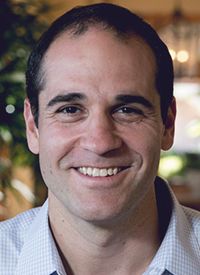Oncology Sales Forces Rely on Virtual Meetings During Pandemic
The COVID-19 pandemic has affected the ability of oncology sales forces to access physicians and advanced practice providers, with fewer face-to-face meetings and fewer interactions overall.
Jon Roffman

The COVID-19 pandemic has affected the ability of oncology sales forces to access physicians and advanced practice providers (APDs), with fewer face-to-face meetings and fewer interactions overall.
In-person details throughout the industry are down 60%, and remote details were up 225%, according to recent data from IQVIA.1 Oncology, specifically, shows a shift from in-person to remote engagement. IQVIA tracked a total of 12,004 in-person interactions between sales representatives and oncologists in 2020, down from 37,950 in 2019. Meanwhile, remote details increased to 28,153 in 2020 from 6812 in 2019.
According to IQVIA, in-person details have rebounded in areas such as gastroenterology and cardiology but are 16% below baseline for oncologists.
Sankalp Sethi

Consulting firm ZS’s AccessMonitor report, which tracks call activity data for about 40,000 reps in the pharmaceutical industry, also found total sales force interactions (in-person and remote) decreased by about 50% in 2020 compared with 2019. For oncologists, in particular, interactions decreased 60%.
About a quarter of oncologists prefer not to engage with oncology manufacturers, and more than 65% of oncologists prefer engaging virtually, said Sankalp Sethi, associate principal at ZS.
“We know cancer patients are highly immune compromised and in-person engagement with these oncologists is difficult because of COVID-19, but how this will evolve in the future still remains to be seen,” he said in an interview.
Currently, about 7400 sales representatives call on oncologists and APPs, up from about 6000 five years ago, according to ZS.
“We haven’t seen meaningful pull back in terms of cutting sales force sizes yet,” ZS Managing Principal Jon Roffman, leader of the firm’s oncology practice, said in an interview. “What we have been seeing is companies leveraging the resources and the sales force that they currently have to enhance their ability to engage with customers in a virtual world.”
With interactions happening more virtually, physicians have more control over who they see and when. Sales reps may find it takes 2 or 3 months to get an appointment.
Roffman predicts there will be moderate growth in the sales force over time. “We will also likely see more enhancement and improvements on the different roles and resources,” he said. “Even though the number of sales reps may not change dramatically, the tools or the skills the sales reps use will be different. They will be more virtual in the future, which will require more interactive content, and they may provide different types of services to support providers who are delivering care via telehealth.”
Sethi predicts that, in the future, the role of the oncology sales rep will evolve and expand. This could mean helping to train nurses to infuse a product, engaging with thought leaders, or managing accounts.
“In the past, we saw more proliferation of growth where there were specific roles to do specific activities,” he said. “As access declines and there is a preference to meet virtually, pharma is going to have to bring more to those limited interactions.”
Reference
- Law H. Monitoring the impact of COVID-19 on the US pharmaceutical market. IQVIA. January 21, 2021. Accessed February 2, 2021. bit. ly/3j8AQNZ



